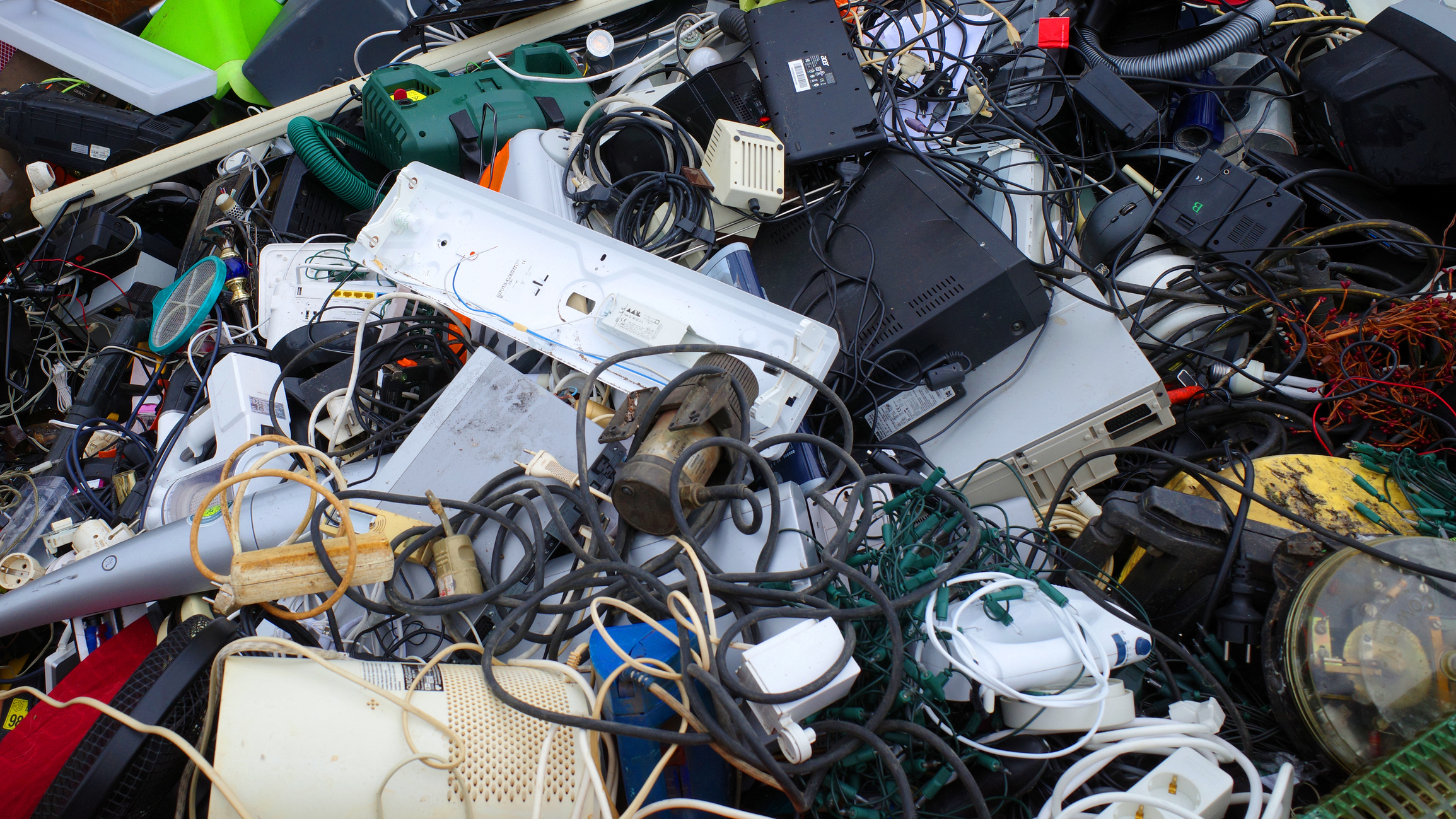There is no reliable data on the portion of pro AV products that contributes to electronic waste because there are no requirements or incentives to record this information. The lack of manufacturer involvement in a product’s end-of-life contributes to this because they rely on the customer / end-user to manage that product stage. The obstacles to gathering this data are the lack of regulatory oversight or environmental laws concerning the disposal of commercial AV equipment, and though it shares components with consumer electronics, the product mix in the commercial AV industry is more varied and disproportionate, and much of it relies on integrated componentry to function.
Accurately measuring the physical volume or gross weight of commercial AV e-waste remains a challenge due to the sheer diversity of the products. Imagine a mix of large venue video projectors, video walls, speaker systems, rack-mounted audio equipment, cameras, microphones, switching devices, control systems – the list goes on. Unfortunately, recyclers and waste companies do not differentiate these collections from general IT or telecommunications equipment.
After two years of research, I can still only guess at an estimate, that the commercial AV industry globally contributes between 1.5 and 2 million metric tons of e-waste per year. While this may seem like a manageable figure compared to the millions of metric tons reported in the recent UN E-waste Monitor Report (https://globalewaste.org), the concern lies in e-waste’s toxicity. Printed circuit boards (PCBs) and soldered components, though a smaller portion by weight, concentrate a significant amount of both hazardous and recoverable materials.
Beyond PCBs, both professional and consumer LCD panels can contain toxic elements like mercury and lead, although typically in smaller quantities. CRT monitors, though phased out years ago, still pose a significant threat because millions languish in landfills, with some containing up to six pounds of highly toxic lead oxide.
Besides AV equipment, global e-waste is defined by any product that contains electronics or electrical components, including refrigerators, washing machines, circuit breakers and wiring. Figure 1 represents the general categories of e-waste measured in 2019, which we can assume includes commercial AV products, the majority of which are likely to be in the small equipment category.
The recently released United Nations’ 2024 E-waste Monitor Report (https://globalewaste.org) paints a concerning picture. While Figure 1 reflects data from 2019, the 2024 report reveals no progress in e-waste reduction.. In fact, global e-waste has grown significantly, jumping from 52 million in 2019 to a staggering 62 million metric tons in 2023. According to the U.N. report, this surge in e-waste equates to an estimated 58 tons of mercury dumped into the environment, often through illegal ‘recycling’ operations in developing nations’ vulnerable communities.
Just recently, Malaysia’s news website, The Star Online, exposed a troubling reality. They reported the discovery of a massive, illegal e-waste processing site – a sprawling 1,500-foot facility hidden deep within a palm oil estate. Operating under the radar, the factory reportedly employed undocumented immigrants from developing nations to dismantle hazardous, toxic e-waste components. Investigations by the Basel Action Network (http://ban.org) revealed these components were likely shipped from the Port of Los Angeles (https://www.eurasiareview.com 3/28/2024). The raid resulted in the recovery of tons of electronic waste, leaving the Malaysian government with the challenge of responsible disposal. This incident is not isolated; authorities have reportedly raided two other illegal e-waste facilities in Malaysia.
Where did the material come from? Unlike certified e-waste recyclers, unregulated operations often source their materials through a less transparent network. They might collect electronic waste from disposal firms, municipalities, or even directly from businesses. This e-waste then enters a shadowy web of international brokers, ultimately landing in developing countries where workers are exposed to hazardous materials during crude ‘recycling’ processes that prioritize profit over environmental well-being.
What industry-wide initiatives can be implemented to gather more reliable e-waste data? I believe that commercial AV manufacturers must take responsibility for the entire lifecycle of their products, instead of relying on their customers to solve their waste problem. Ideally, a comprehensive product tracking system combined with robust take-back programs could provide accurate data on e-waste quantities; however, implementing such a system faces significant hurdles without regulatory or market forces driving change.
– John Thomas, SAVe Board Member

